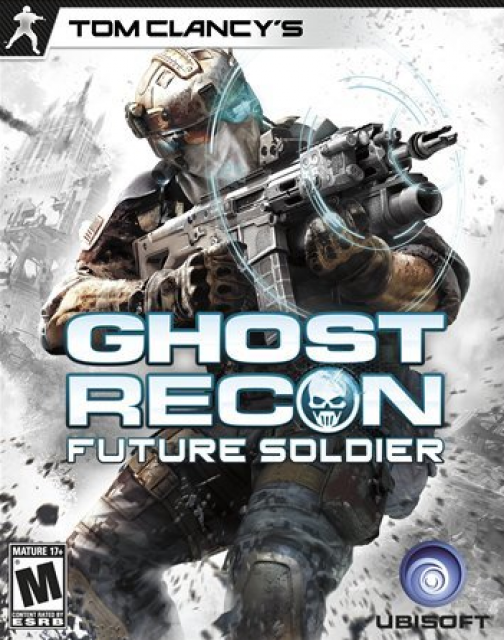Ghost Recon's bombastic shift falters in its execution
Apart from a few handheld titles and a Wii game, the last time the Ghost Reconfranchise hit consoles in full force was 2007’s Advanced Warfighter 2. Since then we’ve seen three Modern Warfare games change the landscape of the modern military shooter market, shifting the focus to over-the-top set pieces, ridiculous action and a hefty multiplayer component that engulfs all in its way. It seems the only way to compete with the crowd is to follow it, and so Tom Clancy’s Ghost Recon: Future Soldier sees the series take some cues from the juggernaut that is Call of Duty, presenting its action with more Hollywood panache and less of the meticulous tactical strategy its predecessors so often required.
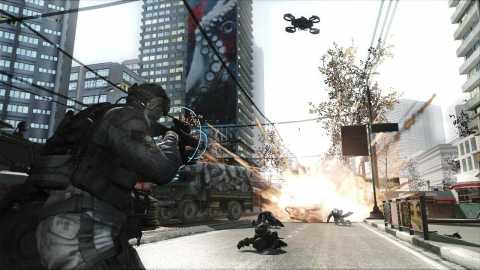
Once again you’re part of an elite squad of individuals, decked out in the latest gear for this near-future warfare. You’ve probably seen the active camouflage featured in promotional materials for the game and it’s certainly your most prominent tool throughout Future Soldier’s eight-hour campaign. Automatically activated whenever crouched; it’s here, where stealthily infiltrating an enemy stronghold under the guise of your camo, that Future Soldier’s streamlined tactics come in to play.
You’ll lurk your way between cover, maybe slash a neck here or pop off a headshot there, but utilising your three-man squad becomes key as you’re faced with larger groups of enemies. Once your team is in position you can mark targets for execution, setting up the ever-effective “Sync Shot” for a synchronised hail of bullets and toppling enemies. You may never have direct control over your teammates but the “Sync Shot” at least give them a reason to be there, and how and when to use this quick tool of decimation presents an increasingly lengthy thought process as the campaign goes on and enemy numbers increase. You’ll want to carefully pick and choose when is the most effective time to pull it out of the bag, studying guard patterns and behaviour to avoid dead bodies being discovered as soon as it’s activated. You can even deploy a small portable UAV drone that can fly high into the sky giving you an aerial view of the battlefield so you can mark targets and wait for your moment to strike with more precision. It might not be as tactically astute as its predecessors but the “Sync Shot” adds a layer of strategy in a game otherwise bereft of it.
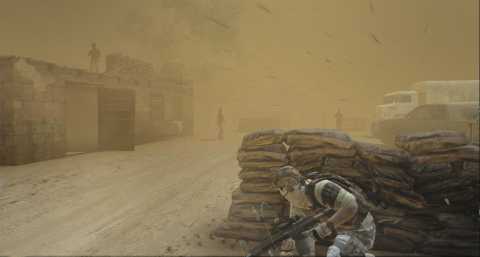
And there’s no doubting the satisfaction that comes from perfectly sweeping through an area undetected. It’s stealthy so there’s still an element of trial and error, but when you succeed you feel a sense of empowerment as you pull off headshots left, right and centre, cracking necks and clearing an area of guards without any trace you were ever there. Areas are often fairly large so there’s an element of player choice with more than one way to traverse each situation. It’s entirely possible to avoid killing anyone at certain junctures, opting instead to sneak through without conflict. It’s just a shame the stealthy and more action-oriented sections are so predictably laid out and differentiated from one another. When you’re in a “no alarm” state enemies follow their patterns until they’re ripe for the “Sync Shot”, but once you’re free to engage targets in combat enemy numbers increase to overwhelming amounts, making attempts at being stealthy needlessly difficult and nigh on impossible. It removes player choice despite the illusion of its existence, lending the game an air of predictability between its two distinct play styles.
This wouldn’t be such a problem if the combat wasn’t as lacklustre as it is, but unfortunately that’s not the case. Future Solider is certainly a competent third-person shooter, featuring one of the best cover systems the genre has to offer, but its firefights are fairly routine, dull and generally uneventful. They’re enjoyable at first but their lack of diversity leads to tedium before long; further dampened by a campaign’s pacing that is content to stay at a steady beat, never ramping up or providing a sense of urgency to proceedings. Without a squad to command you’re left to sit behind cover waiting for enemies to pop out of theirs so you can shoot back at them. Besides the occasional grenade their tactics rarely deviate from the whack-a-mole variety, popping their heads up and down until their eventual demise. When the action does ramp up and opts to tackle the bombastic set pieces games like Modern Warfare are known for, it’s kinetic and exhilarating. But these moments are unfortunately few and far between, and when they’re disrupted by scripting bugs that force you to play through sections again it only compounds the issue.
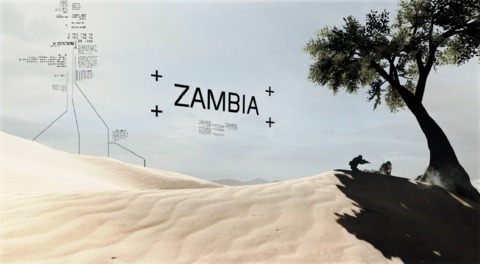
Maybe it’s a sign of the genre’s oversaturation that despite its solid mechanics Future Soldier rarely provides the thrills or excitement it perhaps should. It remains at its best when it diverges away from being just another third-person shooter and into its stealth sections where it’s deluge of gadgets and gratifying game mechanics offer something slightly different from the norm. It certainly has the production values to trade blows with the best, even if its textures are bland and some of the visuals are fairly rough around the edges. You’ll globetrot to every corner of the map, mixing in parts of Africa, Norway, Russia and so on to get a blend of various climates. A trek through a snow swept, zero visibility Antartica is one such highlight, while brown and grey enemy compounds offer some of the more disappointingly generic locales.
Though why you’re going to any of these places is often anyone’s guess. The story is typical Clancy stuff offering plenty of shady dealings, government coups and the threat of nuclear warfare. It’s fairly standard stuff but with so many antagonists, factions and whoever else, it’s difficult to follow and lacks cohesion from level to level. It does at least attempt to humanise and differentiate its lead characters but they’re still caricatures of the genre, ably mixing in with all the other clichés the game is riddled with - a terrorist attack on London seen through the lens of a civilian camcorder being the second time in seven months we’ve seen this particular situation. Neither it’s mechanics, nor it’s story, are afraid to borrow from its contemporaries.
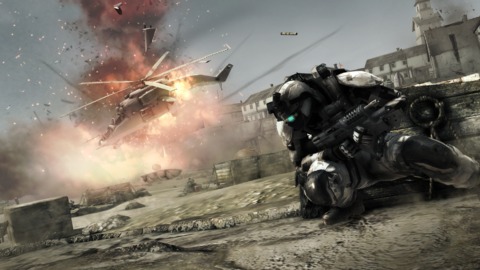
The multiplayer will also be familiar to most, though it does have some nice ideas. It scraps modes like Team Deathmatch to keep the focus squarely on objective based game types; the primary of which has you rotating between different objectives over the course of one match. Most of the time you’ll be attacking or defending a position to hold it for a certain time to activate an EMP that will cripple the opposition’s electronics, but it keeps you moving around the map and encourages teamwork and usage of all three classes. Each class has different abilities that can be unlocked through the standard player progression model, and these range from more weapons, attachments for those weapons and a plethora of gadgets that will usually indicate the position of the opposition for your whole team. Other game modes have you planting bombs and capturing areas, and the solid shooting and fantastic cover mechanics keep it fun and interesting even if it doesn’t necessarily break the mould.
You can also play through the entirety of the single-player campaign in co-op with up to three other people. Since your AI counterparts are immune to detection this gives the stealth sections an added degree of difficulty as you rely on four people to perform, effectively communicate with one another and line up their own “Sync Shot”. However, without friends to play with you’re out of luck since there is no matchmaking option for the co-op or Guerilla: Future Soldier’s wave-based survival mode. The lack of options is disheartening, especially since the presence of matchmaking should really be a given.
If you don’t have friends to play with then Tom Clancy’s Ghost Recon: Future Soldier is solid if not unspectacular. The strength of its campaign is elevated by its meritorious stealth sections but its action is unfortunately pedestrian. Without a breadth of tactical options longstanding fans of the series will be disappointed in its change of approach, and while action fans will get some enjoyment out of its expansive arsenal and competent combat they’ll surely find something more worthwhile and noteworthy elsewhere. Future Soldier is stuck in the middle of trying to please two camps with minimal success on either side. It’s fun but struggles to match its predecessors and the blockbusters that have arrived since its leave of absence.
